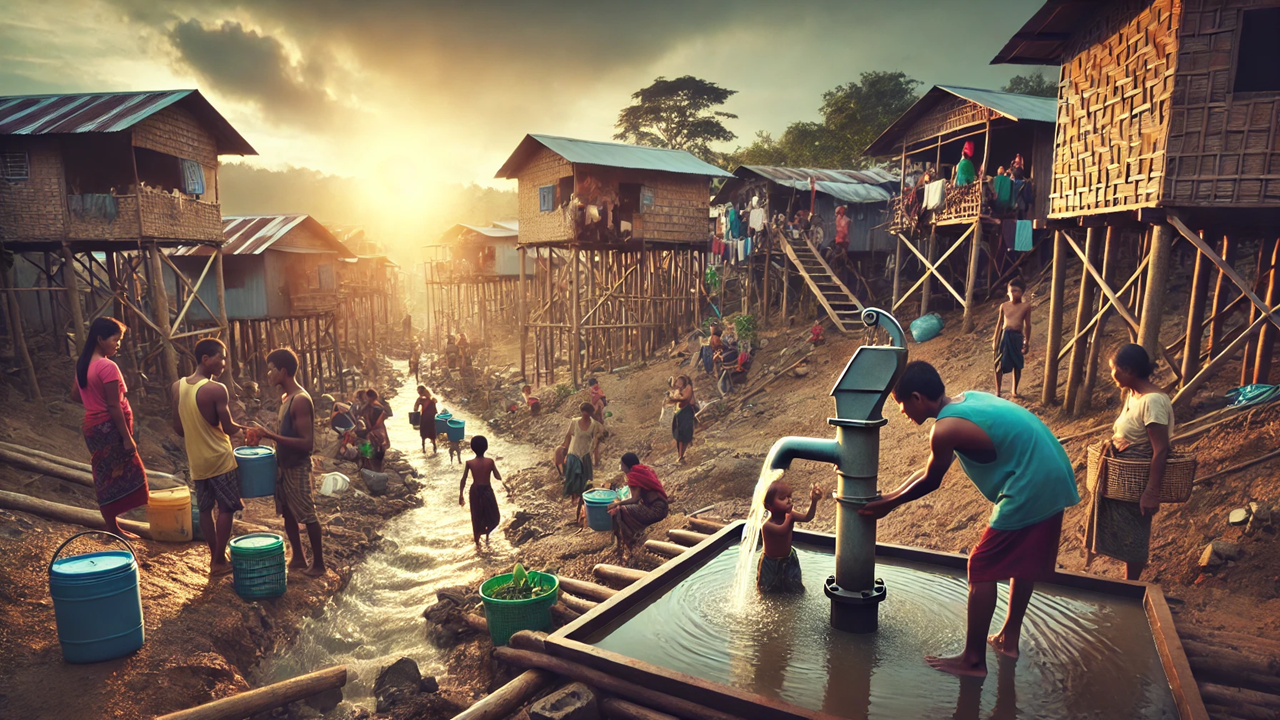Rebuilding Resilience: Strengthening WASH Systems After Disasters
This article delves into the Asian Development Bank's "Build Back Better Sector Guides—Volume 3: Water, Sanitation, and Hygiene (WASH)," highlighting how resilient WASH systems are critical for disaster recovery and sustainable development. It explores key strategies such as decentralizing water systems, nature-based solutions, and integrating digital technology to build long-term resilience. Case studies from Nepal, India, and Bangladesh illustrate successful recovery efforts that not only restored services but strengthened communities' capacity to withstand future disasters.

In the aftermath of a disaster, timely action is essential to restore crucial services and minimize long-term setbacks to development. The "Build Back Better Sector Guides—Volume 3: Water, Sanitation, and Hygiene (WASH)" from the Asian Development Bank (ADB) highlights the importance of resilient recovery efforts in the WASH sector. As disasters are expected to rise due to climate change and unplanned urbanization, building strong, sustainable systems is more critical than ever.
The Importance of Resilient Recovery in WASH
Water, sanitation, and hygiene (WASH) services are fundamental to human health and well-being, especially following disasters. When a crisis strikes, these services are often disrupted, leading to widespread public health issues. The ADB has played a significant role in post-disaster recovery, providing more than $9.1 billion in financing between 2004 and 2023 to support rebuilding efforts in its developing member countries (DMCs). Through its "Build Back Better" (BBB) approach, the ADB focuses on not only restoring WASH services but also making them more resilient to future shocks.
Disasters, whether natural or human-made, disproportionately affect communities in developing regions, often exacerbating existing vulnerabilities. By focusing on long-term resilience, the ADB aims to mitigate these impacts and ensure that recovery efforts lead to stronger, more sustainable systems. The guide stresses that resilient WASH infrastructure should not only restore services but also adapt to future risks, incorporating climate and disaster resilience into the very fabric of the recovery process.
Key Measures for Building Resilience
The guide outlines several key strategies for enhancing WASH resilience. One of the most critical is site planning and hazard assessment, which involves evaluating risks to water sources and sanitation infrastructure from future disasters. This approach ensures that reconstruction efforts are sustainable and reduce exposure to hazards such as flooding, droughts, or earthquakes.
Decentralizing water systems is another important strategy. Instead of relying on a single central source, resilient systems are spread across multiple points, ensuring that if one part of the network is compromised, the rest can continue functioning. For example, in India, after a devastating cyclone, CARE India installed hand pumps on elevated platforms to ensure continued water access even during future floods. This practical, low-tech solution highlights how simple measures can build significant resilience.
Nature-based solutions, such as integrating green infrastructure into WASH systems, are also emphasized. Planting trees or creating natural barriers can mitigate flood risks and improve water quality, as seen in a Sri Lankan project where sustainable drainage systems were implemented to reduce stagnant water, preventing flooding and disease outbreaks.
Case Studies: Success Stories in Post-Disaster Recovery
Several case studies from Asia showcase successful WASH recovery projects. After the 2015 earthquake in Nepal, public and private toilets were constructed with proper lighting to address the needs of women and girls, who were disproportionately affected by the disaster. This approach helped create safer, more dignified living conditions during the recovery phase.
In Bangladesh, a participatory water resources project improved community resilience by training local groups to manage small-scale water infrastructure, ensuring that these systems could withstand future disasters. These examples demonstrate how empowering communities and focusing on equity can make recovery efforts more sustainable.
ADB’s guide also highlights the importance of integrating digital technology into WASH systems. Monitoring devices, such as sensors to track water quality or detect leaks, can significantly improve the efficiency and resilience of these services. However, the technology must be resilient itself, with backup systems in place to maintain operations during emergencies.
Building Resilience for the Future
The ADB's "Build Back Better" approach aligns with global goals like the United Nations Sustainable Development Goal 6—universal and equitable access to safe drinking water and sanitation by 2030. Resilient WASH infrastructure is not only critical for immediate recovery but also for long-term development. As the guide emphasizes, investing in robust systems today will prevent greater costs and suffering in the future.
The WASH sector plays a pivotal role in broader infrastructure systems, including energy, healthcare, and education. Failure in water and sanitation services can have cascading effects, disrupting essential services across these sectors. By building resilient WASH systems, countries can safeguard their populations and promote sustainable development even in the face of increasing climate threats.
In conclusion, the ADB's sector guide serves as a vital resource for governments, organizations, and stakeholders involved in disaster recovery. Its focus on resilience, inclusivity, and sustainability offers a roadmap for ensuring that future disasters do not derail the progress of communities, but instead, become opportunities to build back stronger and better.
- FIRST PUBLISHED IN:
- Devdiscourse
ALSO READ
World Bank Approves Strategic Partnership to Boost Suriname’s Economic Resilience and Inclusive Growth
World Bank Approves $56M Project to Enhance Road Connectivity and Climate Resilience in Central and Southern Laos
Hurricane Helene's Aftermath: Mountain Communities' Struggle and Resilience
Govt Approves $226.2M Resilience Package for State Highways and Local Roads
Resilience and Rebuilding: Kibbutz Be'eri's Ongoing Journey










